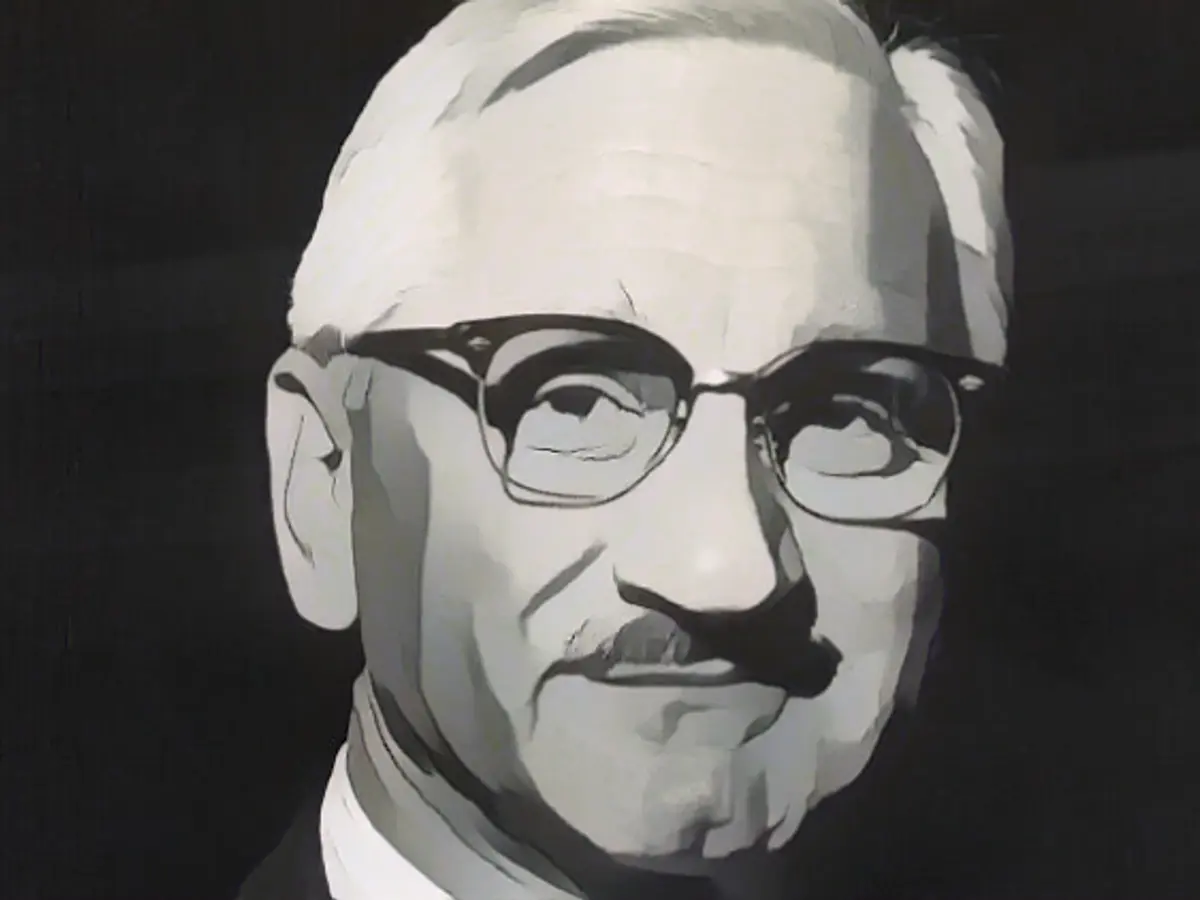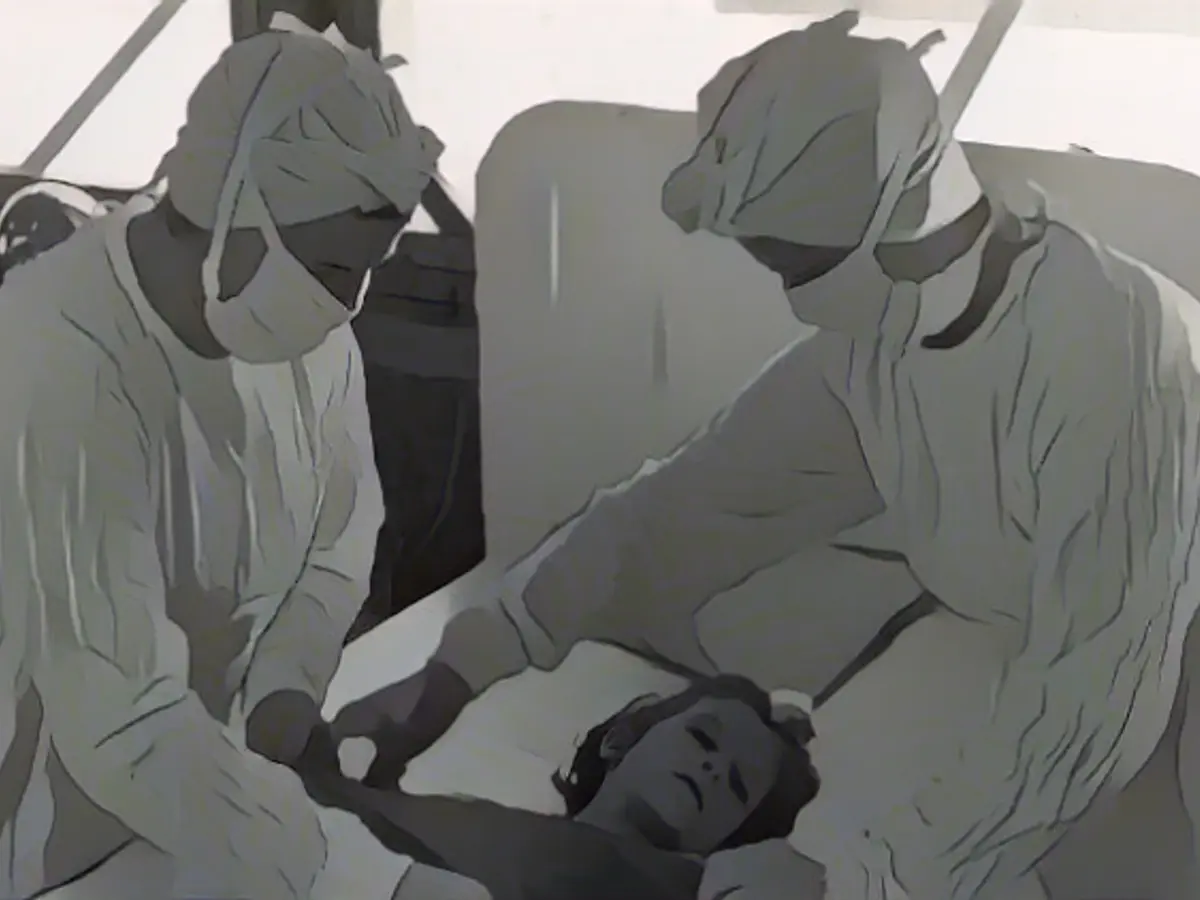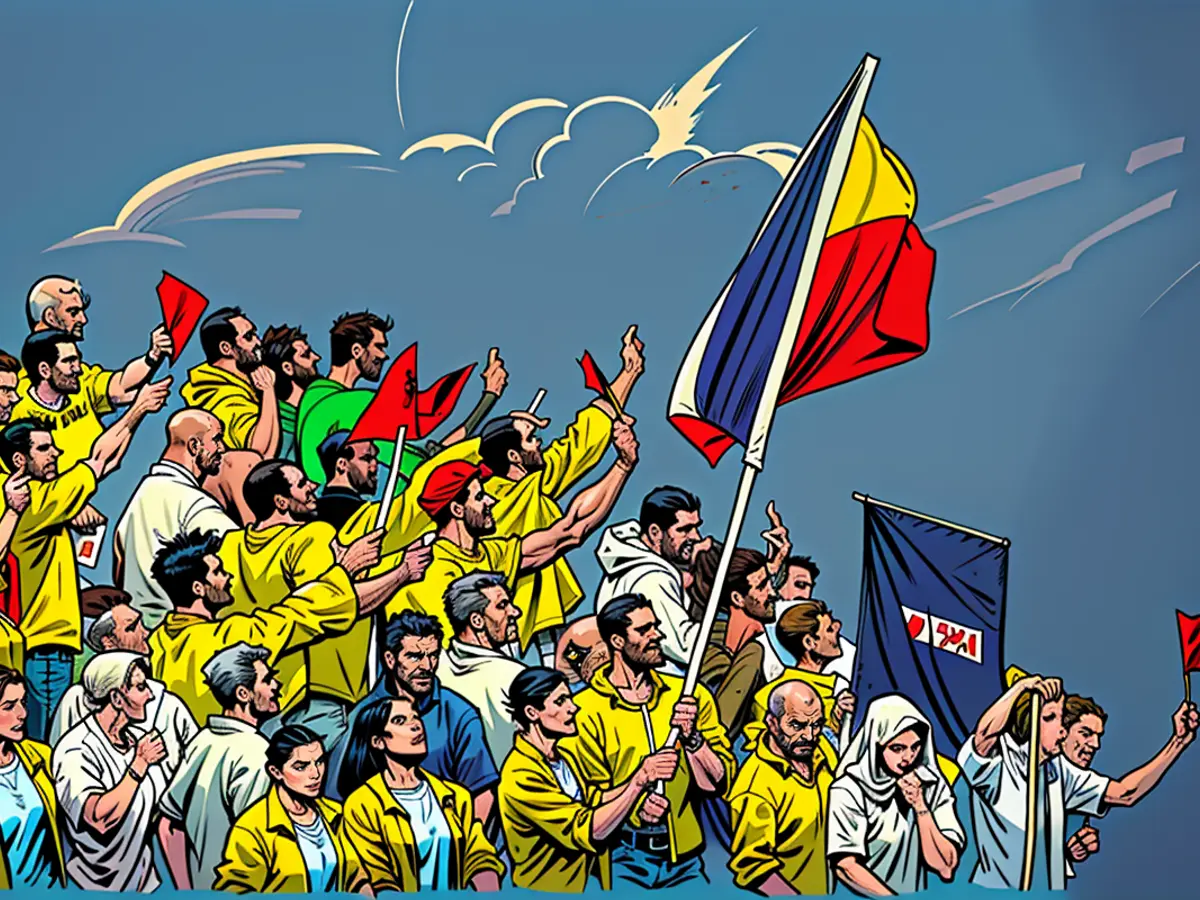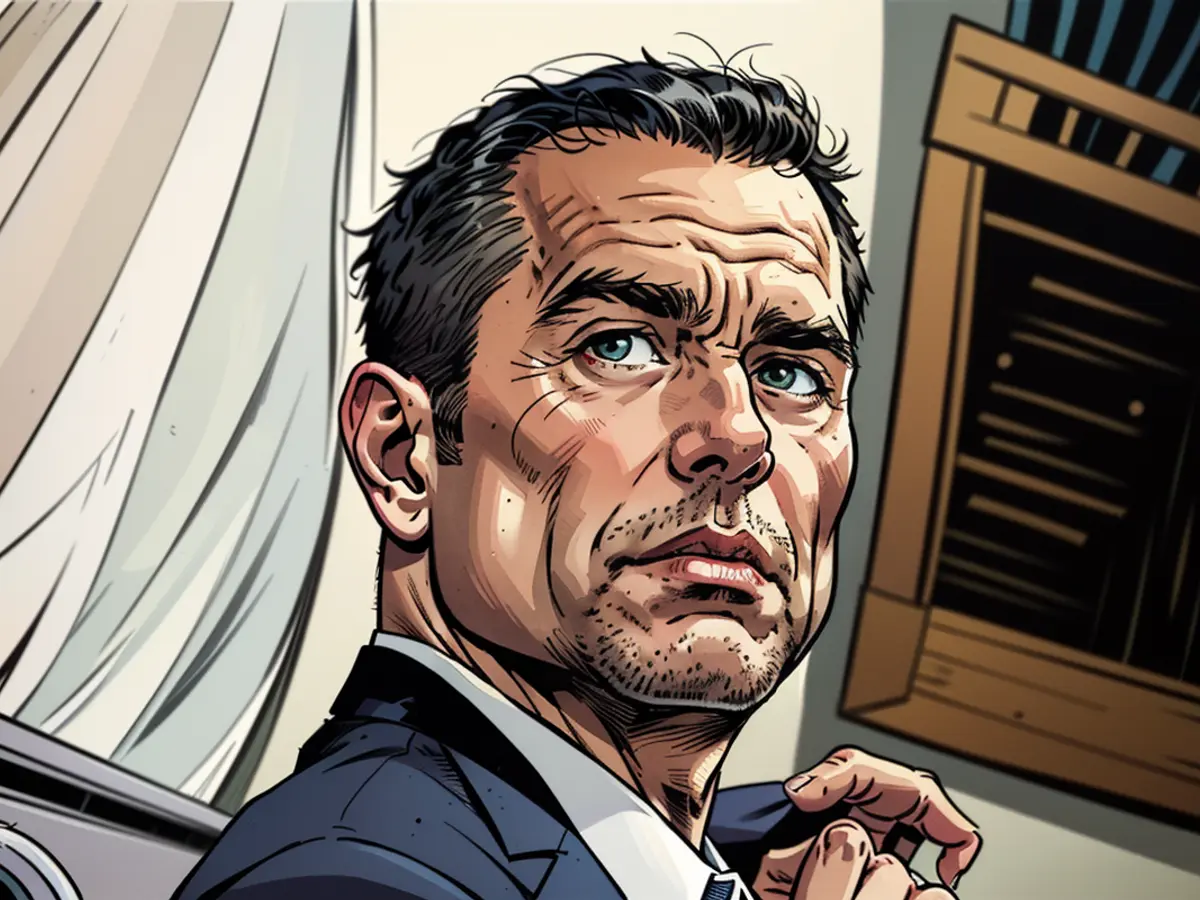The invisible researchers of the polio vaccine
In the middle of the 20th century, polio continues to spread in the USA. The young virologist Dr. Dorothy Horstmann is trying to conquer polio. It is a race against time and social norms.
Deserted parks, closed swimming pools, orphaned playgrounds - and all on a hot summer's day. The setting described by US author Lynn Cullen in her new novel "The Formula of Hope" evokes memories of coronavirus lockdowns, but reaches further back into the past.
Polio outbreaks in America have been increasing since the beginning of the 20th century. Today we know that poliomyelitis is a highly contagious infectious disease that mainly affects children, hence the name "polio". It can lead to paralysis and even death. Researchers in the mid-20th century - similar to epidemiologists after the coronavirus outbreak - tried to develop a cure for the virus as quickly as possible.
"The Formula of Hope" tells the medical story of the search for a vaccine against polio from the 1940s to 1963. The plot of the novel, which was translated from American English by Maria Poets, is based on the life story of US virologist Dorothy Millicent Horstmann. She is the protagonist of the historical-fictional novel.
A great woman with great ambitions
In brief flashbacks, readers learn about the Dorothy character's deprived childhood: her parents emigrated to America at the beginning of the 20th century. Her father and brother suffer from serious illnesses, so her mother has to keep the family of five afloat. At the age of just thirteen, Dorothy is the sole breadwinner of her family: after school, the girl gives piano lessons to "sweet, unmusical, rich children": Beethoven's Moonlight Sonata is the tonal leitmotif of the novel - the main character listens to Beethoven in every situation in life.
The protagonist experiences illness and suffering in her own family at an early age. These experiences drive the girl on: Dorothy wants to heal people. But for the daughter of German immigrants, starting a career in medicine poses challenges: She comes from a working class background and always has financial worries. Her German accent is also noticeable. That's why the protagonist takes a degree in English before studying medicine to improve her communication skills. She tries to fit in.
But no matter where she goes, the 1.85-metre tall woman stands out: even at high school, she was "the lonely beanpole leaning against the wall by herself". The sentence "But you're tall!" is a kind of running gag in the story.
A rocky road to science
The starting point of the novel is the protagonist's first job: as an assistant doctor at Vanderbilt University Hospital in Nashville, she feels like "a modern-day Gulliver" practicing among "tiny little men". Her chief physician doesn't recover for a long time from "having a woman on his medical staff" and never tires of emphasizing: "This isn't a place for women anyway."
While her colleagues are flooded with offers, the protagonist is desperately looking for a new job at the end of her residency: "Who would want a unicorn? Apparently no one," she asks herself. Is this really how the historical Dorothy Horstmann would have described herself? The author explains: "The Dorothy Horstmann you meet in this novel is based on what I was able to gather about her life from articles, letters, books, dates and oral sources. But for this story, she became my creature, just like all the other characters, whether they are based on real-life models or completely invented."
Despite all the obstacles, the protagonist gets a job in the Poliomyelitis Study Unit at the still renowned Yale School of Medicine in Connecticut. In January 1942, America enters the Second World War, but for Dorothy and her colleagues it remains the same: "Polio doesn't take a break just because there's a war on." When funding for polio research became scarce, Dorothy lost her job on the grounds that she was the only member of the team without a wife and children to support. A bitter setback. In addition, her colleagues dismiss her research in a scientific journal. Cullen's Dorothy feels like a fool. Nevertheless, the protagonist later returns to Yale.
Academic cockfight in the race for a polio vaccine
Often the only woman in the room, the protagonist is an outsider in polio research. When she interrupts the "men's club chatter", she regularly causes irritation. Many colleagues see her as a secretary who is responsible for the coffee supply. Pessimistically, the protagonist believes "she would never get beyond her role as hostess to a bunch of rams who regularly bumped horns".
She stays out of the academic cockfight over who will be the first to discover the cure for polio. "If every industry was a jungle where only the strongest survived, the academic jungle was one of the toughest. Everyone fought to be king in their own domain." She is annoyed by the posturing of the "alpha males": "These men. You'd think that defeating polio would be more important to them than their turf wars."
Dorothy's persistence pays off: in 1949, "Henry Horstmann's girl is the figurehead of the polio unit". She finally receives funding for her own study on monkeys. Dorothy finds a close ally in the black animal keeper Eugene Oakley. Because he lost his 18-month-old daughter Linda to polio, he shares Dorothy's indispensable ambition in the search for a cure. It is only with this goal in mind that the protagonist endures to inflict suffering on animals for the good of mankind. A race against time, because from summer to summer the polio outbreaks take on ever new proportions and more and more people die.
Tearing tests of love
While the main plot retells Dorothy's fight against polio, the author also devotes herself to the love affairs of her protagonist in subplots: as a young doctor, the protagonist meets the virologist Albert Sabin, also based on a historical figure, right at the beginning of the novel: The "boy wonder" seeks exchanges with the protagonist at every opportunity - but his advances are not always purely professional. Dorothy enjoys his attention: "The way they inspired each other was intoxicating." But the virologist is already married, as she more or less sadly realizes. "They were just two disease detectives, both trying - perhaps to the point of obsession - to beat polio. Strong feelings between like-minded people shouldn't be mistaken for anything else," the protagonist tells herself. Her colleagues also suspect every time they meet that Dr. Sabin and Dr. Horstmann are having an affair.

Dorothy's second lover, a fictional character, has a different character. Cullen presumably created the great Dane Arne Horn to provide her protagonist, who has to do without so much, with a perfect lover: A progressive partner who supports Dorothy and plays house while she saves the world. Not only that, because Arne is a real hero. In two separate actions, he is said to have saved Jews from Scandinavia from Nazi persecution.
This love story falls into a kind of kitsch romance: the author has her protagonists sigh the name of their beloved many times over "Oh, Arne" or "Oh, Arne". Their love consists of inflated longing, physical desire and a good dose of exaggeration, which might be too much for some readers.
Ultimately, Dorothy is at a crossroads: does she want to become her lover's wife or a lonely scientist trying to defeat polio? These life paths are not compatible. A balancing act that many women still have to face today.
Invisible heroines in the history of medicine

Chapters that focus on the lives and everyday lives of the women around Dorothy stand out like beacons from the storyline. The US author's intention is to make women visible in the history of the poliovirus. In her novel, Cullen tells the history of medicine from the perspective of women: Isabel Morgan, an epidemiologist at Johns Hopkins University, who was the first to develop an experimental polio vaccine. Or the laboratory assistant Elsie Ward, who discovered how to multiply the polio virus in tissue. And Sylvia Sabin, who gave up her own dream of becoming as good a photographer as Margaret Bourke-White to start a family. Nurses and other care workers are also given a voice. They are all heroines in Cullen's story of the polio virus.
In this way, the somewhat cheesy but also informative novel shows its readers what has changed since the last century. But at the same time, it makes clear what perhaps still needs to change in 21st century society.
Read also:
- "You can't beat the whole world"
- The woman who dances with death
- We all have someone on our conscience
- Explosive names revealed? Book about royals stopped
- Despite the advancements made by epidemiologists and virologists in the USA during epidemics like polio, the role of women in these fields has often remained hidden in historical accounts.
- Dorothy Horstmann, a prominent female virologist, played a crucial role in the race against time to develop a polio vaccine in the mid-20th century, a story that is beautifully portrayed in Lynn Cullen's novel "The Formula of Hope."
- In the historical context, reviews of Dorothy Horstmann's research were mixed, and she faced criticism even as she made significant strides in the field of virology and the search for vaccinations.
- Women like Dorothy, with ambitions to make a mark in the field of medicine, have often had to overcome societal norms and barriers, as is evident from the experiences depicted in "The Formula of Hope."
- The history of epidemics such as polio in the USA and the contributions of women like Dorothy Horstmann are important to review, as their stories shed light on the critical role that virologists and epidemiologists, including women, have played in advancing the field of medicine.
Source: www.ntv.de








